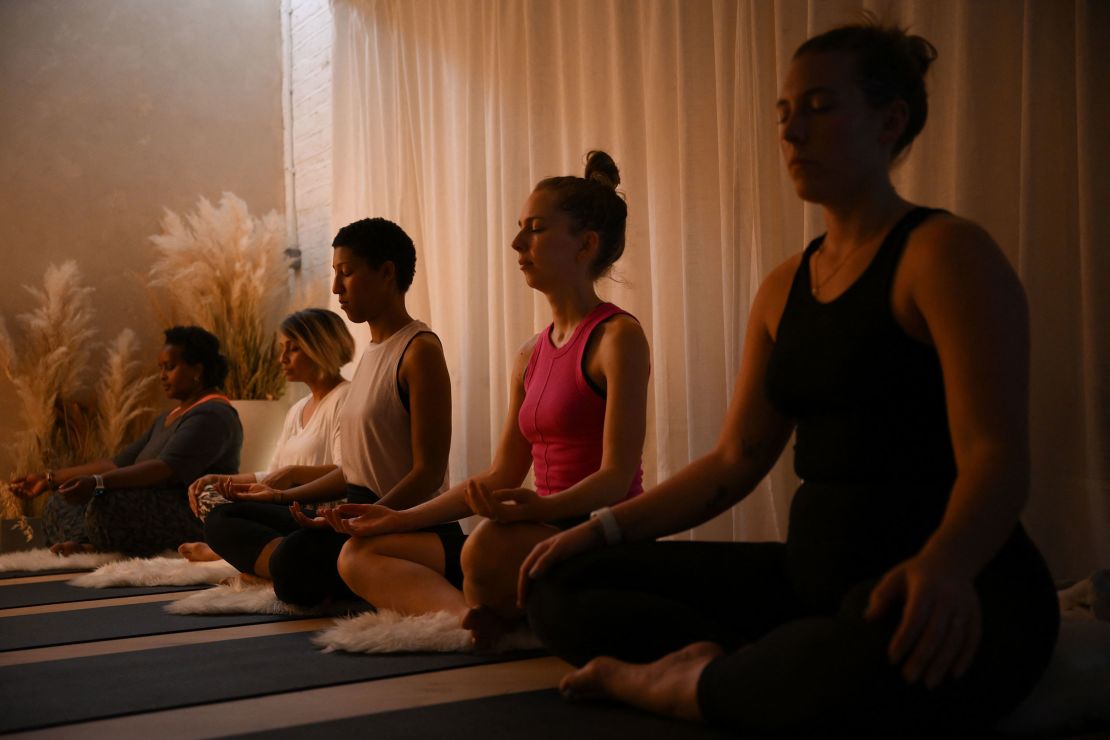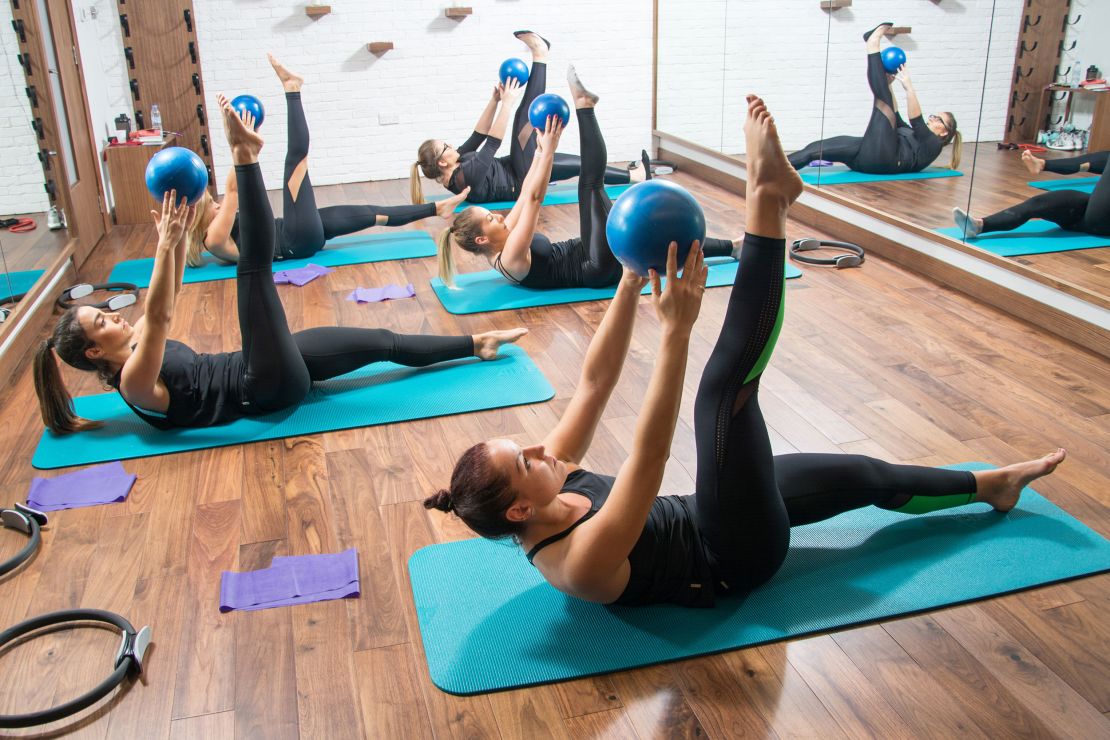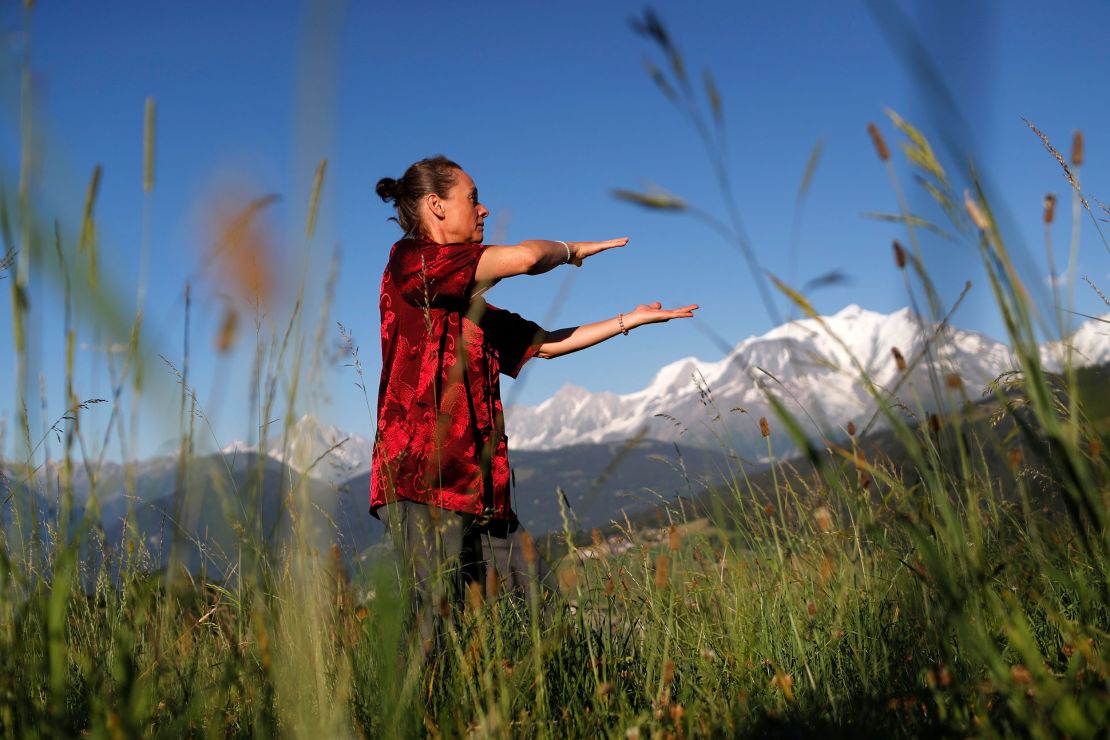Editor’s Note: Before beginning any new exercise program, consult your doctor. Stop immediately if you experience pain.
Mindfulness and mind-body practices are hot topics today, especially since the Covid-19 pandemic brought with it increased levels of stress and anxiety. In the US, some of the most popular mind-body exercises are yoga, Pilates, qigong and tai chi. These four are all therapies that integrate movement, breathing exercises and meditation to enhance your physical and mental health, self-awareness and spiritual growth.
All these practices can improve your strength, balance, flexibility, posture and mindfulness, experts say. In addition, studies have shown all, or some, may have a positive impact on health concerns, including substance abuse, pulmonary disease, diabetes, Parkinson’s disease, arthritis and back pain.
For example, qigong was found to improve quality of life, sleep quality, balance, handgrip strength, trunk flexibility, blood pressure and resting heart rate in a 2017 study published in the journal Evidenced-Based Complementary and Alternative Medicine. And tai chi and qigong were found to reduce depression, stress, anxiety and mood disturbances in another study, published in 2013 in the journal Psychiatric Clinics of North America.

Before trying to determine which practice best suits you, learn a little about each one. Yoga is an ancient practice linked to Hinduism. It was birthed in what today is India, then introduced in the United States in the late 1800s. Yoga pairs various poses with breathing techniques, usually in a slow-moving format. There are numerous forms of yoga, including modern twists such as hot yoga and goat yoga, but in the US, most people learn hatha yoga, one of the more basic versions.
Pilates is a much more recent practice created by German immigrant Joseph H. Pilates, who introduced it to the US in the 1920s. Pilates focuses on stretching and strengthening the body while also concentrating on breathing and meditation. It is typically practiced in group mat classes or in small reformer classes, which make use of the universal reformer piece of equipment that Joseph Pilates invented.
Many experts believe qigong, which originated in China, has been practiced thousands of years. Like yoga and Pilates, qigong also integrates physical postures with breathing techniques and mindfulness but in sequences of flowing movements that are generally gentler and slower.
These movements can be performed both standing up or sitting down, and there are thousands of different postures that can be strung together. You can also practice qigong as a single movement that is repeated over and over, and sometimes it’s even just a focus on breathing with no motion at all.

Tai chi is a version of qigong, and one of the most popular iterations around the world. Akin to a martial art, it focuses on specific movements that are strung together in a set routine and often performed outdoors. Qigong is the simpler and more adaptive of the two, focusing more on cultivating energy known as chi or qi, while tai chi places more emphasis on physical form and requires more discipline.
How to choose the best practice for you
Which one is best for you?
“These all are movements for anybody; they really are,” said Dr. Vincent Minichiello, an assistant professor and integrative health physician at the University of Wisconsin-Madison. “They’re movements for people who want to prioritize moving the body in a gentle and healing fashion.”

There are still some differences to consider. “Yoga studios are probably more accessible than places to practice Pilates, tai chi or qigong, so maybe that’s what you do,” Minichiello said. A tai chi student himself, Minichiello noted some people may find memorizing its movements challenging, so the simpler qigong might be a better fit.
“Qigong can also be practiced laying down and even through visualization,” he said, “so if you’re having a hard time moving your body, you can practice the movements by visualizing them.”
Pilates can carry a higher risk of injury than the others, said Lauren K. Baker, a certified personal trainer based in New York, because its moves require a lot of control, precision and core strength.
Tai chi requires a lot of space, and preferably outdoors, which may be a hindrance to some. The movements can also be painful when first starting. “One benefit of qigong is that it releases stagnant energy,” Baker said, “but the purging of negative energy from the body can lead to fatigue, nausea, soreness or a mild headache.”

If you’re attracted to Pilates, make sure you begin one on one with a highly skilled instructor, said Jessica Schatz, a certified master Pilates instructor and yoga teacher in Los Angeles. “The problem with Pilates is that it’s not a registered trademark, so everyone can use the name. People who say they’ve practiced it for years come to me injured.”
More confused than before? Maybe you don’t need to choose one of the four. Schatz said she often has her clients simply practice taking three full, conscious breaths when they wake up in the morning.
Or she’ll ask them to do what she calls the “5, 4, 3, 2, 1.” This exercise requires you to sit down and notice, then name, five things you can see, then four things you can feel (emotionally or physically), three things you can hear and two things you can taste or smell. You finish by saying one nice thing about yourself.
“It’s a way to practice being in the present moment, and staying in the present, to help us from being anxious,” Schatz said.
No matter which of these practices you end up trying, your body and mind will appreciate the fact that you’re setting aside time to care for yourself, Minichiello said. Because self-care is essential, and your body knows it — and craves it.
“Our bodies are sending us messages all the time, But some people don’t listen or pay attention until it’s too late,” Schatz said, referring to problems such as back pain and ulcers. “Science has backed up the fact that our mental and emotional health are inextricably connected to our physical health.”
Sign up for CNN’s Fitness, But Better newsletter series. Our seven-part guide will help you ease into a healthy routine, backed by experts.
Melanie Radzicki McManus is a freelance writer who specializes in hiking, travel and fitness.








